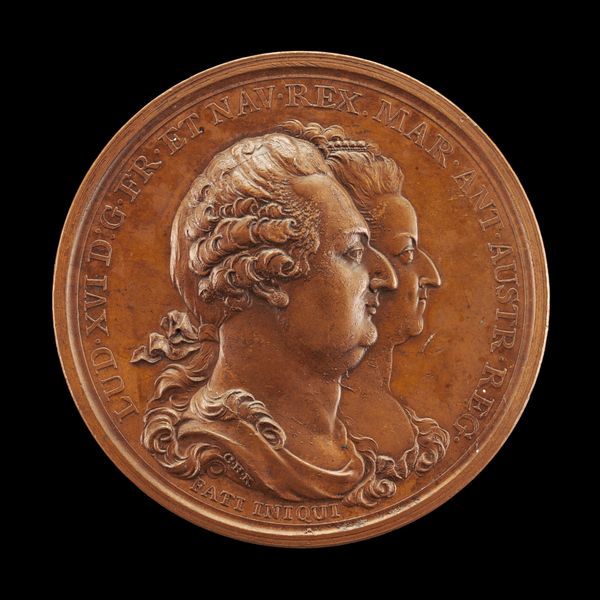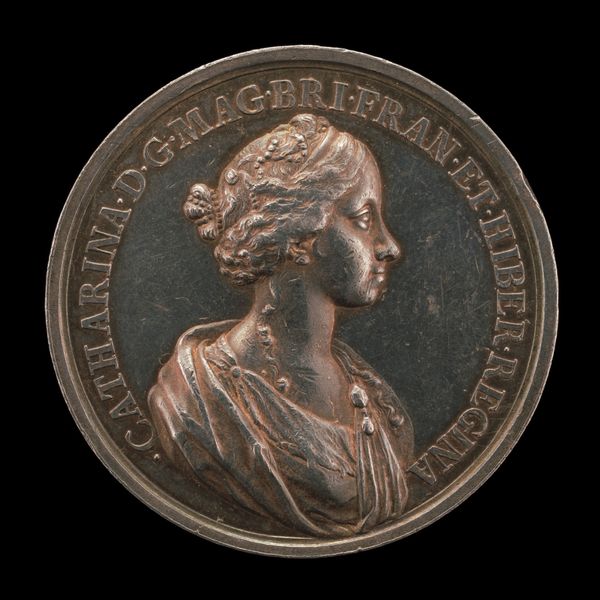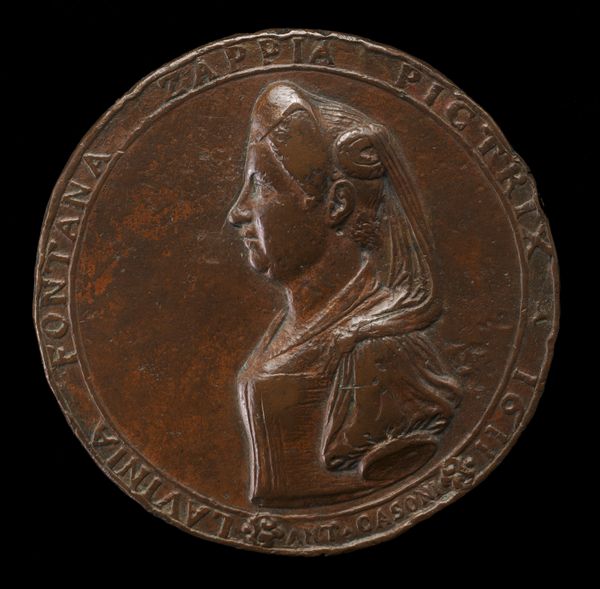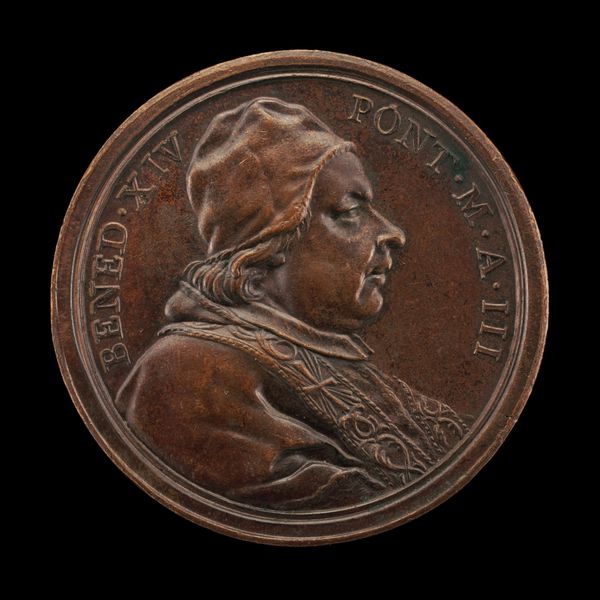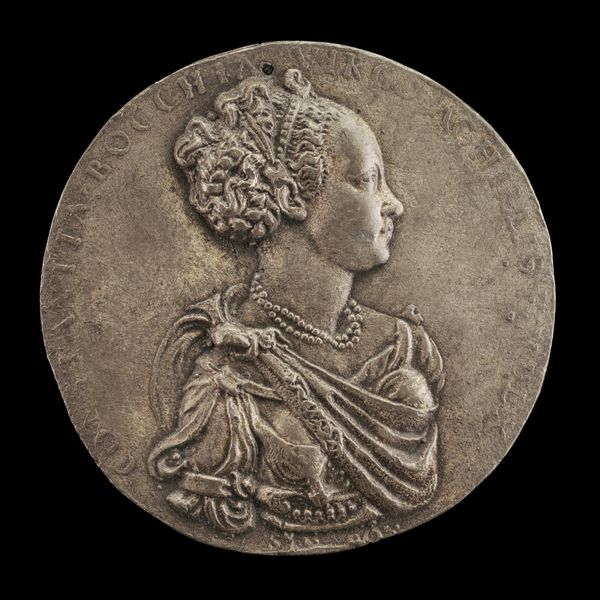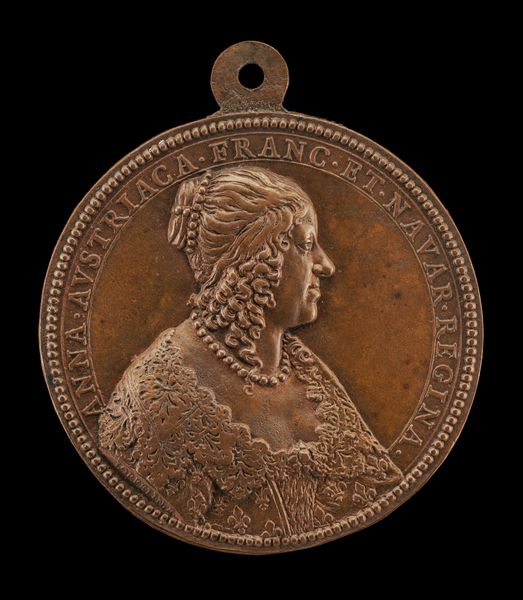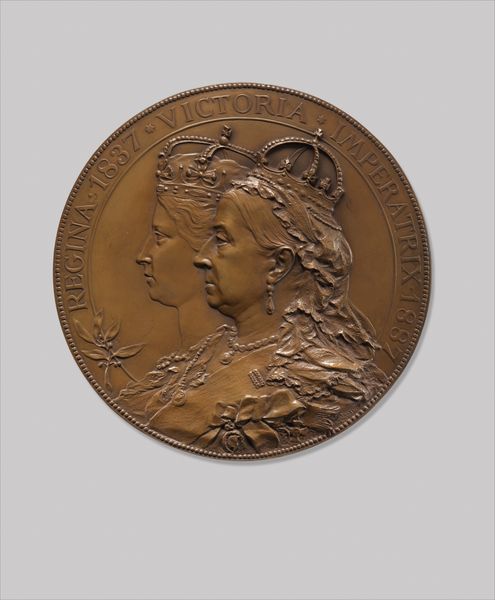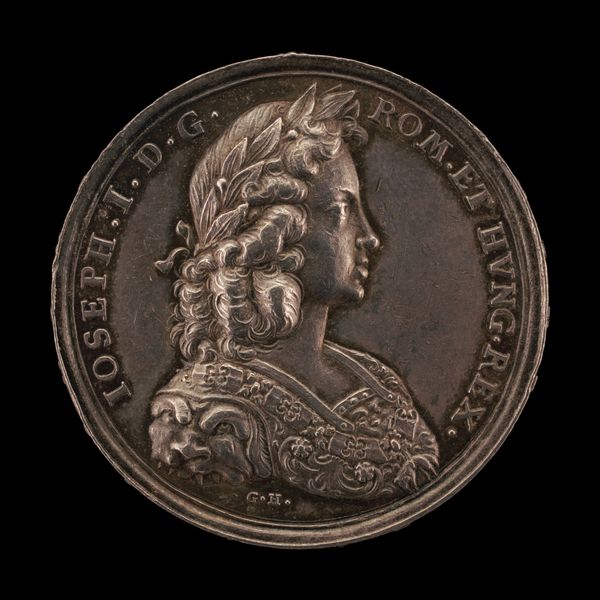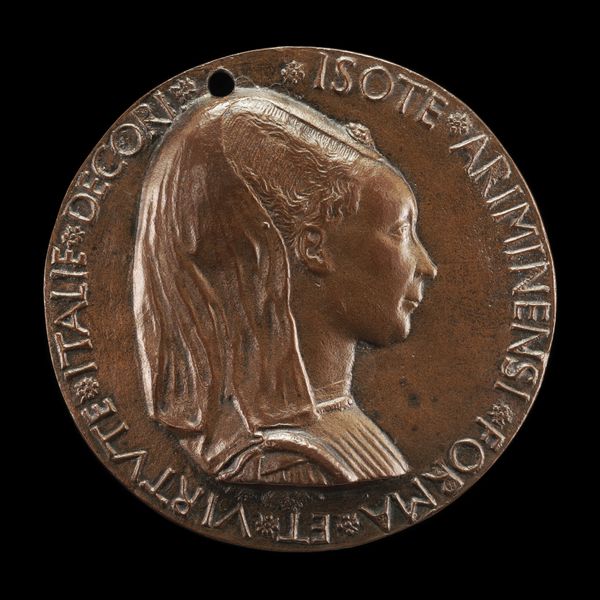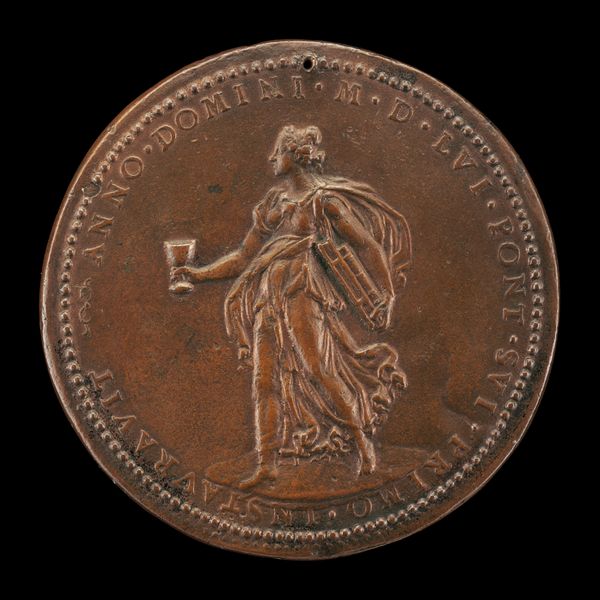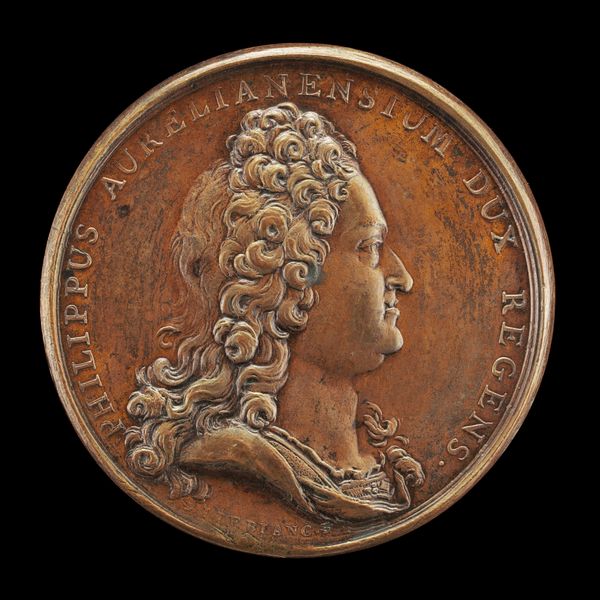![Victoria, 1819-1901, Queen of England 1837 [obverse] by Elkington and Company](/_next/image?url=https%3A%2F%2Fd2w8kbdekdi1gv.cloudfront.net%2FeyJidWNrZXQiOiAiYXJ0ZXJhLWltYWdlcy1idWNrZXQiLCAia2V5IjogImFydHdvcmtzLzYwMzkzNmM1LTY3ZWUtNDNiZi1iMGU2LTI4MDgxMmUyMDM2YS82MDM5MzZjNS02N2VlLTQzYmYtYjBlNi0yODA4MTJlMjAzNmFfZnVsbC5qcGciLCAiZWRpdHMiOiB7InJlc2l6ZSI6IHsid2lkdGgiOiAxOTIwLCAiaGVpZ2h0IjogMTkyMCwgImZpdCI6ICJpbnNpZGUifX19&w=3840&q=75)
Victoria, 1819-1901, Queen of England 1837 [obverse] 1886
0:00
0:00
bronze, sculpture
#
portrait
#
medal
#
sculpture
#
bronze
#
sculpture
#
history-painting
Copyright: National Gallery of Art: CC0 1.0
Curator: Here we have a bronze medal from 1886 depicting Victoria, Queen of England. It seems to be cast by Elkington and Company. Editor: Its somber tone and sharp, elegant lines convey an immediate impression of formal authority. It seems very...official. Curator: Yes, the formal qualities speak volumes. Consider the profile view, typical of royal portraiture throughout history. The artist pays incredibly detailed attention to the crown—emphasizing power and lineage through representational design. Editor: Beyond its aesthetic elements, it prompts consideration of the medal-making process itself. Who were the laborers involved in Elkington and Company? How does this object speak to industrialization? The date—May 1886—situates it firmly within the Victorian era's global trade networks and its attendant exploitation of resources and people. Curator: An excellent point. And this date, coupled with the inscription "Opened by Her Majesty," likely signifies an important event graced by Queen Victoria, perhaps a significant public work. That would have added value, transforming the medal from mere commemorative item to an active marker of progress and monarchical engagement. Editor: Precisely. Further, the material itself—bronze—suggests accessibility and durability. Unlike a gold or silver rendering, the comparative affordability of bronze likely broadened distribution. Its very composition, and production, democratized access to royalty to some degree. Curator: Indeed. Reflecting on this piece through the dual lens of form and function helps us appreciate how meticulously the imagery of authority could be shaped and disseminated through objects both artistic and utilitarian. Editor: Absolutely. By examining both intrinsic elements and wider production chains, we reveal the intricate social fabric imbued in something that, at first glance, appears merely a portrait of power.
Comments
No comments
Be the first to comment and join the conversation on the ultimate creative platform.
